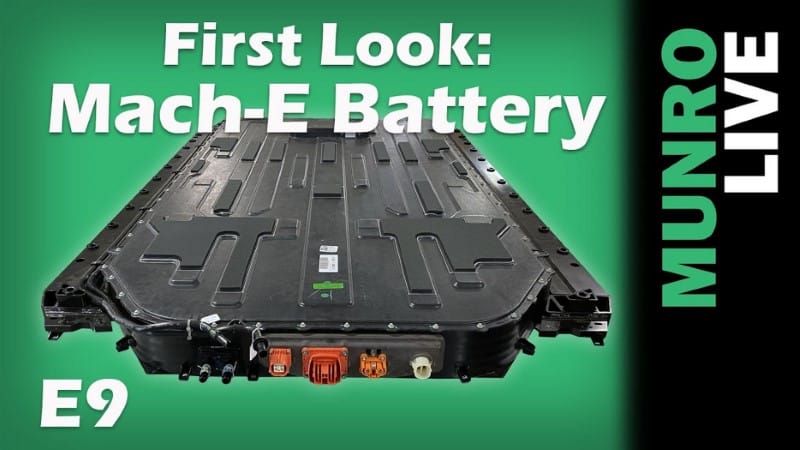[ad_1]
Sandy Munro revealed during disassembly of the Ford Mustang Mach-E that the car has a structural battery instead of a traditional package. It’s a technology that Elon Musk wants to embed in the Model Y.
Most motorists don’t worry about the size of the tank when buying a thermal car, The capacity of an electric car’s battery is at the center of commercial debate.. While it’s easy to quickly refuel just about anywhere, making a long trip in an electric vehicle requires extra logistical effort.

That’s why manufacturers are trying to find solutions to make the car lighter (to gain autonomy) or to offer increasingly efficient battery packs. With this in mind, Ford decided to use a structural battery for its Mustang Mach-E.
What is a structural battery?
When we talk about a structural battery the battery is integrated directly into the vehicle chassis. In this case, manufacturers no longer use conventional lithium-ion cells. electricity stored directly in the materials that make up the chassis like carbon fiber.
A few microns thick, the layer integrated into the car’s structure makes it possible to lighten the vehicle and get rid of cells that are likely to ignite, as was the case with this Model S Plaid recently.
Besides the disadvantages, it should be noted that this type of battery has an energy density of about 20% lower than conventional batteries, but the weight gain on the whole vehicle compensates for this problem. It should also be noted that carbon fiber is less resistant to impacts and deformations than the steel normally used for chassis.
It is also possible to integrate smaller cabinets such as the 4680 directly into the floor to save space and some weight. It is this solution that Tesla initially pursued for the Cybertruck or Roadster.
Mach-E Package
The weight of Ford’s battery, which is announced as 485 kg, seems to be more than the 437 kg weight of the Model Y. However, when adding that of the Model Y, it is necessary to take into account that the battery is integrated into the chassis. your build.
On the capacity side, Ford announces the package at just 68 kWh, while the cells used suggest a battery with a total capacity of 75.7 kWh. As Volkswagen did with the ID.4, which plans to go all-electric soon. To avoid premature wear of the pack, Ford decided to limit its battery and not use its full capacity..
That’s why Ford takes one step ahead of Elon Musk’s company, which hopes to produce its new batteries in 2022.
Source: autoevolution
[ad_2]
Source link